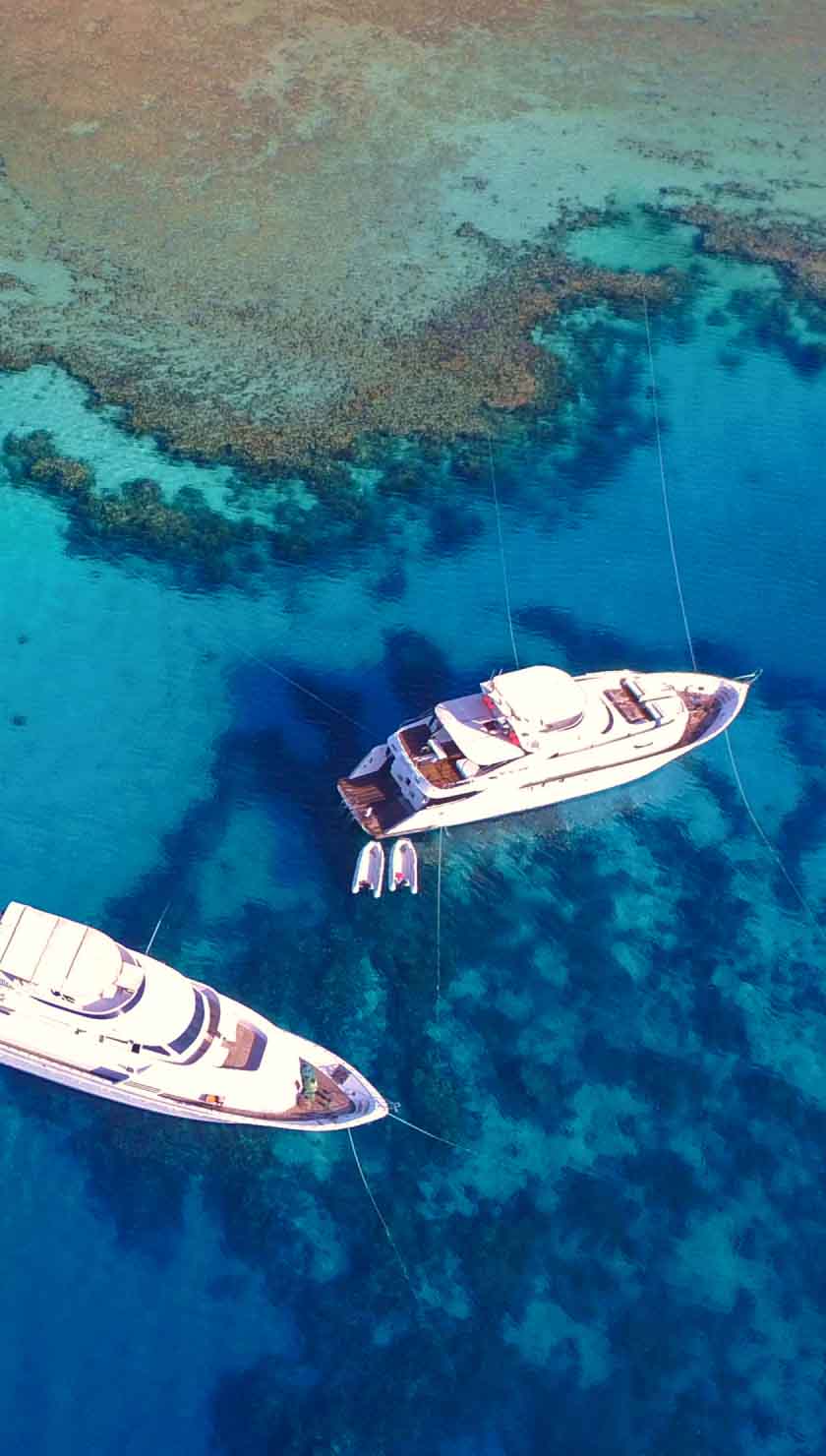The Best Places to Dive with Whale Sharks

Swimming with the biggest fish in the sea is often at the top of any diver's bucket list. The whale shark is the largest fish in the ocean, but there is no reason to fear these gentle giants. Swimming alongside these huge polka-dot-covered creatures is an unforgettable experience that can be combined with diving at some of the best sites in the world on an overnight liveaboard.
Whale sharks may be enormous (often growing to 12 meters in length), yet they feed on plankton, around 0.04% of its size. Whale sharks use their giant mouths like a net, scooping up plankton and unsuspecting small fish loitering near the ocean's surface. Because of this, you’ll often find the best way to see these gentle giants is snorkeling rather than scuba diving.
Whale sharks are listed as vulnerable but are still hunted for their meat and fins, considered a gourmet delicacy in some Asian countries. When swimming with these gentle giants, ensuring you leave enough space between you and the shark is important. Whale sharks have a calm temperament, but swimming too close to them can scare them off and cut your encounter shorter than you’d like.
As mysterious as they are large, whale sharks are almost constantly migrating, following their food source. Scientists have yet to discover the mating sites of these enormous fish and believe them to be relatively solitary creatures. Whale sharks are found in tropical waters where food is abundant; there are a few sites where encounters with these fish are almost guaranteed throughout the year.
Sea of Cortez, Mexico

At certain times of the year, swimming with whale sharks in the Sea of Cortez, Mexico, is almost guaranteed. Protected by the Gulf of California, the Sea of Cortez’s relatively calm water stretches for over 1000 kilometers. Almost a third of the world’s species of cetaceans can be found in this underwater microcosm, and along with whale sharks, you can expect to interact with curious Californian sea lions, dolphins, and manta rays. The Sea of Cortez diving season starts around July and wraps up in October.
South Ari Atoll, Maldives

Rated by Lonely Planet as one of the best spots to dive with whale sharks, the Maldives offers amazing encounters with whale sharks. In particular, South Ari Atoll is one of the best sites in the Maldives to swim with whale sharks.
South Ari Atoll is one of the largest atolls in the Maldives. It is scattered with pinnacles where pelagic species congregate, supplying divers with no shortage of incredible dive sites and, more importantly, no shortage of whale-shark interaction. At Maamigili Beyru in the southern part of Ari Atoll, you can come face to face with juvenile whale sharks, as they can be spotted here year-round.
Cenderawasih Bay, Indonesia

Cenderawasih Bay in the Northern Province of West Papua, Indonesia, provides divers and snorkelers with a unique whale shark experience. Under traditional fishing platforms, ‘bagans,’ whale sharks gather to feed on the fish that slips through the local fishermen’s nets. Because of this, getting up close and personal with the whale sharks of Cenderawasih Bay is almost guaranteed. The Ondina Liveaboard even runs specific itineraries focusing on visiting this unique area. The best time to visit the whale sharks of Cenderawasih Bay is when the weather is fine and calm, between April and November.
Seychelles Islands
Whale sharks often visit the inner islands of Seychelles between June and December. Whale sharks and marine life are well protected in the Seychelles, and over 1000 fish species can be spotted around the islands.
The Seychelles is a perfect place for non-divers and divers alike. Liveaboards such as the Sea Bird & Sea Star or the SV Sea Pearl offer varied itineraries, which include scuba diving, snorkeling, and island exploring, so you don’t have to be a hard-core dive enthusiast to visit this beautiful part of the world.
Darwin and Wolf Islands, The Galapagos

Three different ocean currents converge in the Galapagos archipelago, and currents bring nutrients. Of these three currents, at least one brings the whale sharks' favorite food source, plankton. Thus, whale sharks can be spotted year-round in the Galapagos (along with many other amazing marine life), but these sightings increase when the yearly migration occurs. Between June and December, the dry season in the Galapagos Islands, whale sharks are regularly spotted in the waters surrounding Darwin and Wolf Islands.










